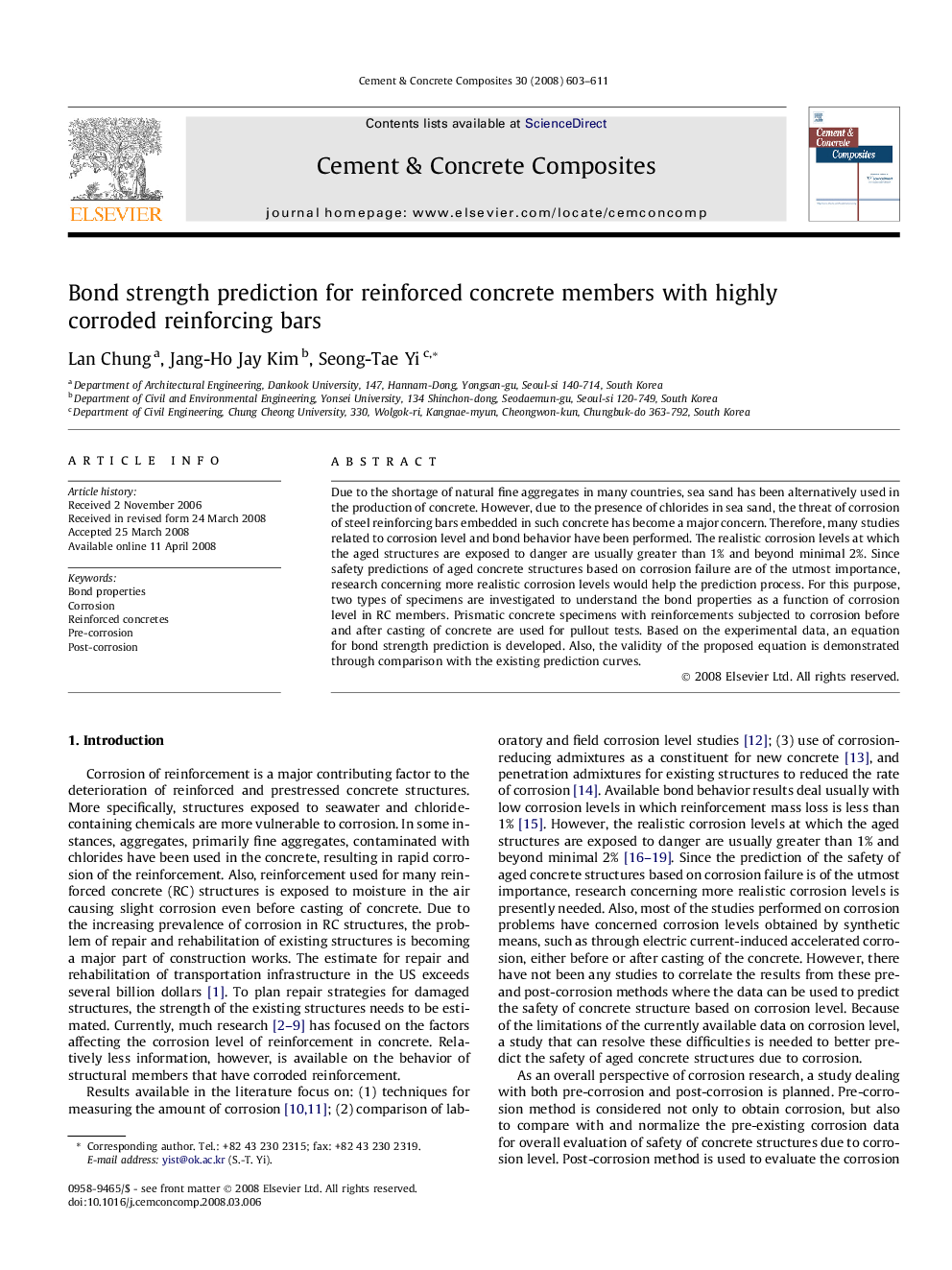| Article ID | Journal | Published Year | Pages | File Type |
|---|---|---|---|---|
| 1455587 | Cement and Concrete Composites | 2008 | 9 Pages |
Due to the shortage of natural fine aggregates in many countries, sea sand has been alternatively used in the production of concrete. However, due to the presence of chlorides in sea sand, the threat of corrosion of steel reinforcing bars embedded in such concrete has become a major concern. Therefore, many studies related to corrosion level and bond behavior have been performed. The realistic corrosion levels at which the aged structures are exposed to danger are usually greater than 1% and beyond minimal 2%. Since safety predictions of aged concrete structures based on corrosion failure are of the utmost importance, research concerning more realistic corrosion levels would help the prediction process. For this purpose, two types of specimens are investigated to understand the bond properties as a function of corrosion level in RC members. Prismatic concrete specimens with reinforcements subjected to corrosion before and after casting of concrete are used for pullout tests. Based on the experimental data, an equation for bond strength prediction is developed. Also, the validity of the proposed equation is demonstrated through comparison with the existing prediction curves.
